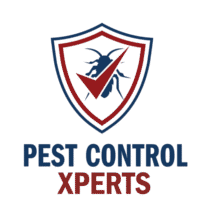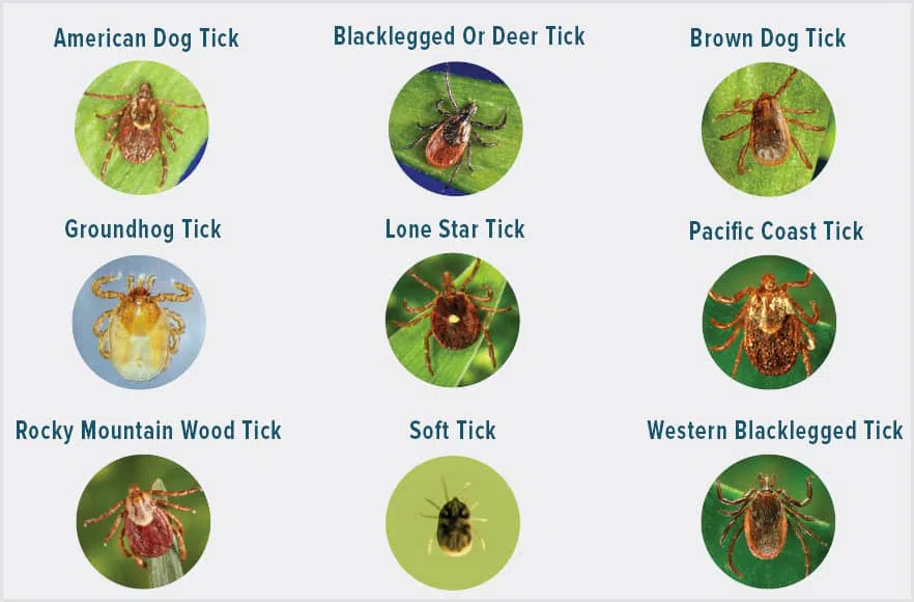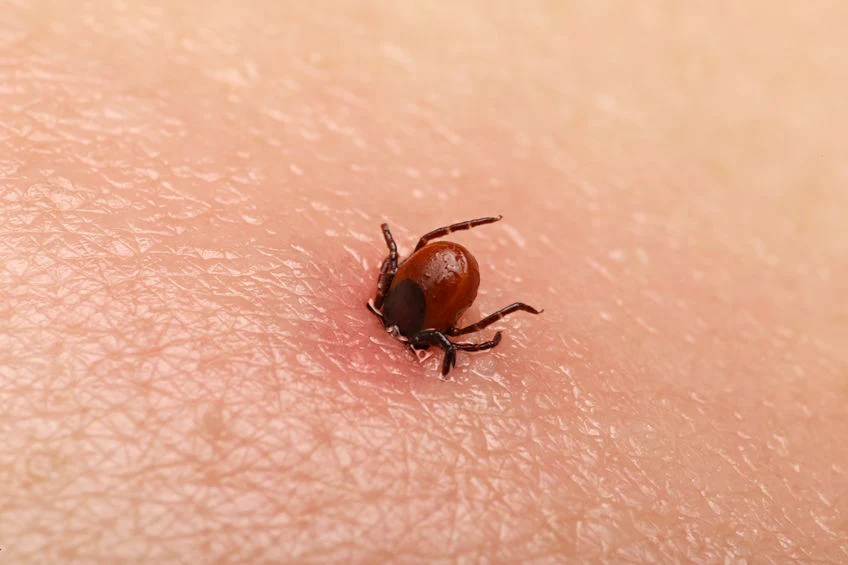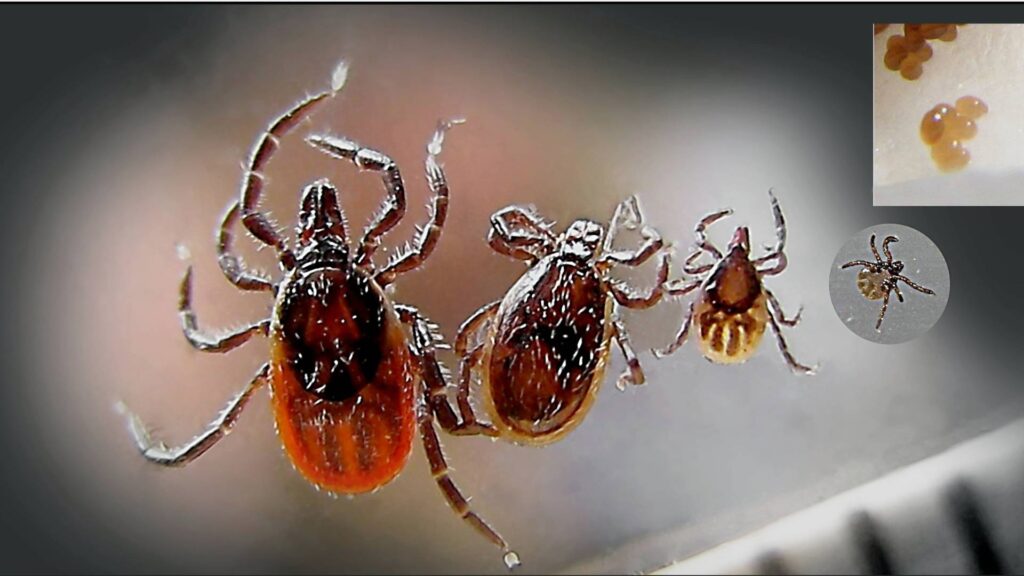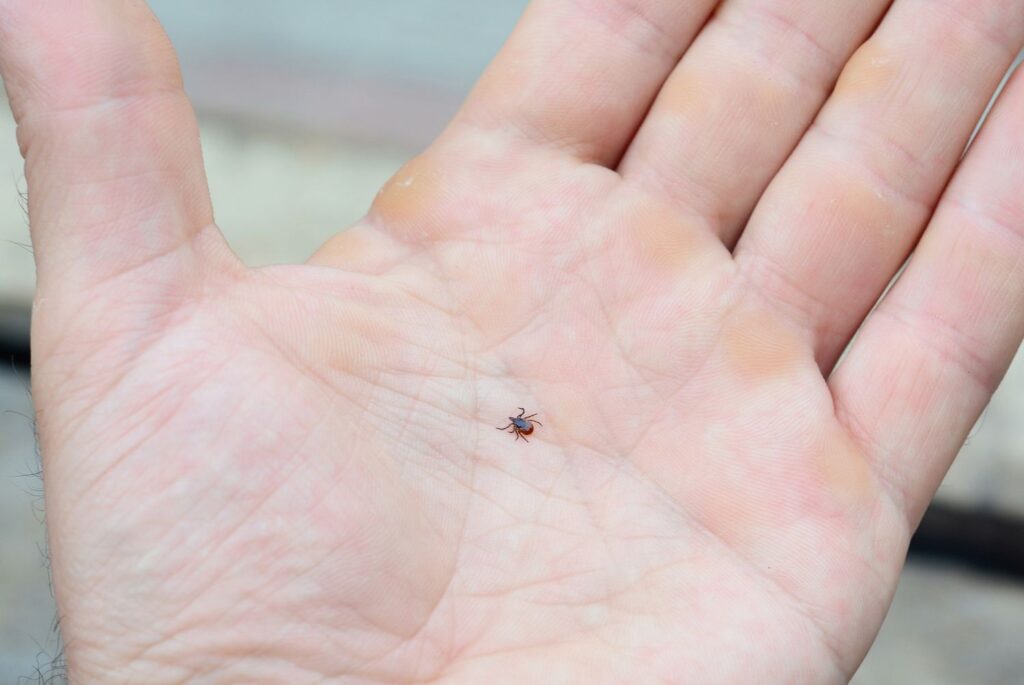Tick Removal in Ohio: Pest Control Xperts in North Olmsted
Serving North Olmsted and nearby areas such as Olmsted Falls and Berea.
Ticks are small yet persistent pests that attach themselves to warm-blooded hosts, feeding on blood and sometimes carrying pathogens that concern both people and animals. In Ohio, ticks thrive in grassy, wooded, or brushy areas, waiting for passing hosts before latching on. Once these pests reach yards or homes in North Olmsted or nearby communities such as Olmsted Falls and Berea, they can place families or pets at risk of bites that may lead to irritation or possible diseases. Understanding how ticks find their way indoors, the hazards they pose, and the best strategies for removal helps owners manage infestations confidently.
Pest Control Xperts offers tick removal in Ohio, combining established approaches with proven methods that target ticks at every life stage. Our exterminator in North Olmsted conducts detailed checks to spot where ticks hide, then designs a plan that includes treating outdoor areas and, if necessary, addressing any interior concerns. By interrupting tick reproduction and reducing the likelihood of their return, we restore safety to yards or homes. This page covers why ticks appear, the signs of potential infestations, effective ways to control them, and practical measures that keep yards free of these unwanted pests.
Why Ticks Appear in Ohio
Ticks seek warm-blooded hosts, including pets and wildlife, to take a blood meal. Certain features in Ohio’s climate and landscapes create excellent conditions for them:
- Warm, Humid Months
Ticks generally become more active in spring and summer, though they can remain present later into autumn if temperatures stay mild. Ohio’s weather patterns often supply enough warmth and humidity for ticks to breed, especially in thick vegetation. - Abundant Wildlife
Deer, raccoons, squirrels, and stray animals move across yards, dropping ticks or picking them up. Once ticks are deposited in suburban lawns or near foundations, they cling to tall grass or leaf piles, poised to attach to pets or people passing by. - Pets as Carriers
Dogs and cats that roam wooded edges, parks, or yards can return with ticks on their fur. Owners who do not use consistent flea and tick preventatives may discover ticks indoors after these pests drop off to lay eggs or seek fresh meals. - Yards with Dense Vegetation
Ticks prefer shady, damp spots, often found in overgrown lawns, brush piles, or dense shrubbery. If owners do not trim grass or remove excess leaves, these hidden areas maintain the moisture ticks need to thrive. - Possible Interior Infestations
Though many ticks remain outside, some may hitch a ride indoors on clothing or pet fur. Once inside, ticks can hide in carpets or cracks, biting people or animals when an opportunity arises. Regular vacuuming and checking pets helps keep them from settling in.
Responding rapidly when ticks appear can protect residents and pets from itching bites or possible diseases. A trained exterminator in North Olmsted ensures thorough coverage of the yard, plus advice for ongoing measures.
Hazards Linked to Ticks
Even though ticks are small, ignoring them can lead to significant concerns:
- Diseases and Infections
Certain ticks in Ohio may carry illnesses. The blacklegged tick sometimes transmits pathogens related to Lyme disease if attached for enough hours. Bites from the American dog tick may lead to other conditions. Although not every tick is infected, caution remains important. - Discomfort from Bites
Ticks embed themselves in skin to feed, leaving a red, itchy mark. Removing an attached tick improperly raises the possibility of leaving mouthparts behind, causing additional irritation. Pets that carry many ticks might become restless or risk further complications. - Potential Indoor Breeding
While ticks generally prefer outdoor settings, brown dog ticks can complete their life cycle indoors. They hide in cracks near walls, kennels, or furniture, laying eggs that hatch into new ticks. This scenario leads to constant biting concerns unless addressed fully. - Ongoing Animal Stress
Pets with ticks may scratch or bite excessively at the affected areas, developing raw skin. Heavy infestations may cause anemia or other health problems in smaller animals. Owners then face veterinarian bills and the stress of repeated grooming sessions. - Possible Spread to Other Properties
If ticks remain active on pets or personal items, they might reach vehicles or neighboring homes. This spread complicates efforts to contain the infestation and requires broader cooperation among community members.
While not every tick carries pathogens, taking proactive steps to remove them reduces discomfort and lowers any risk of disease.
Signs of a Tick Problem
Spotting ticks early helps owners schedule timely assistance from a tick removal expert:
- Frequent Tick Sightings on Pets
During grooming, owners may find small, dark insects attached to a pet’s ears, neck, or belly. Removing these ticks promptly prevents additional feeding or egg-laying. If pets appear restless or scratch more than normal, checking them is important. - Ticks Crawling Indoors
Sometimes adult ticks wander floors or walls after dropping from a pet. Observing multiple ticks suggests an established population outside or an ongoing indoor issue. This scenario calls for swift intervention. - Bites on Humans
Ticks often attach to ankles or legs first. People may discover a small, dark insect embedded in skin or a red spot after removal. Taking note of each bite and looking for possible rashes or unusual symptoms is wise, especially if blacklegged ticks are suspected. - Tick Dirt or Eggs
Though less common than flea dirt, tick excrement or egg masses might appear in pet bedding or carpeting. A thorough inspection can confirm if fleas or ticks are causing the debris. - Neighborhood Warnings
If neighbors mention ticks on their lawns or if local parks post signs about high tick activity, owners in North Olmsted, Olmsted Falls, or Berea might see elevated risk. Being aware of regional outbreaks supports preventive measures.
Why an Exterminator is Effective for Tick Removal
While do-it-yourself yard sprays or pet shampoos offer partial relief, they seldom stop tick populations completely:
- Comprehensive Property Inspection
A trained exterminator checks lawns, shrubbery, fences, and shaded zones where ticks may hide. They also examine pet areas indoors if the problem extends to carpets or furniture. Identifying nesting spots allows for precise treatments. - Integrated Control Methods
Specialists use insect growth regulators or adulticides outdoors, carefully targeting moist or overgrown corners. If pets reintroduce ticks indoors, an exterminator can treat carpets or baseboards as well. Combining yard work, chemicals, and occupant education yields stronger results. - Safe Application
Overusing insecticides can harm pollinators or pose risks to families. Professionals follow guidelines that minimize hazards while ensuring ticks encounter lethal contact. Once treatments dry, the space is safer for humans and animals. - Collaboration with Pet Care
Though exterminators do not treat animals, they coordinate with owners who rely on veterinarian recommended preventatives. Monthly tick control for pets, combined with yard treatments, drastically reduces tick feeding opportunities. - Long-Term Monitoring
Some eggs may hatch after initial steps. If owners or pets see more ticks in the following weeks, the exterminator can re-check or reapply solutions, ensuring no new wave survives. - Advice on Yard and Pet Habits
From trimming grass to laundering pet bedding in hot water, professionals share practical tasks that discourage tick presence. This synergy of occupant changes plus expert treatments fosters lasting relief.
Pest Control Xperts: Tick Removal in Ohio
Pest Control Xperts assists owners in North Olmsted, as well as those in Olmsted Falls and Berea, with thorough tick services:
- Property Evaluation
Our team starts by discussing tick sightings or bites, learning about possible pet involvement and typical yard usage. We then inspect lawns, shrubs, and any indoor areas if ticks have possibly followed pets inside. This reveals how far the infestation has spread. - Customized Treatment Options
If ticks mainly gather in the yard, we apply insecticides or growth regulators around fences, tall grass, or brush piles. We focus on likely tick zones, limiting overall chemical use while hitting breeding pockets. If indoors also has ticks, we spot-treat carpets or floors with safe formulations. - Pet Emphasis
Owners with dogs or cats often coordinate veterinarian tick preventatives. We highlight the importance of monthly or year-round products for high-risk pets. Grooming animals or using tick combs after walks further lowers the odds ticks drop indoors to lay eggs. - Education on Landscape
Ticks hide in shady, moist corners or areas with leaf litter. Our staff points out spots that might require trimming, raking, or shifting yard debris. Creating drier, sun-exposed lawns helps keep ticks away. - Indoor Safeguards
If tick presence indoors is confirmed, we might treat rugs or baseboards with an adulticide that kills any fleas or ticks on contact, plus an insect growth regulator to stop new hatchings. We share guidelines for vacuuming thoroughly after treatments. - Follow-Up and Prevention
Because tick eggs may hatch weeks later, we stand ready if owners spot new ticks. Meanwhile, we suggest repeated yard checks, consistent pet grooming, and sealing possible entry points so fewer ticks cross the threshold.
Habits that Keep Ticks Away
After removing ticks, continuing these steps deters their return:
- Short Grass and Yard Maintenance
Mow lawns to a shorter height, removing the shade and humidity ticks enjoy. Keep shrubs or bushes neatly trimmed, and rake leaves or other debris. Minimal ground clutter means fewer places for ticks to hide. - Move Firewood and Brush
Stacking wood away from the house helps lower tick harborages near foundations. Discard brush piles swiftly rather than letting them sit for extended periods. - Inspect Pets After Walks
Immediately after returning from grassy trails or wooded parks, comb or brush pets. Checking around the collar, ears, and belly reveals newly attached ticks. Removing them quickly prevents them from dropping off indoors. - Wash Pet Bedding
Cleaning pet blankets or cushions weekly in hot water kills any ticks or eggs that might cling to fabrics. Drying items on high heat effectively finishes the job. - Seal Entry Points
Patching small gaps under doors or near window frames blocks stray ticks from creeping inside. If rodents or stray animals enter basements or crawl spaces, they might carry ticks with them. - Use Approved Pet Preventatives
Monthly topicals, oral medications, or tick collars recommended by vets significantly reduce the chance fleas or ticks feed on pets. A consistent regimen lowers the chance of ticks dropping off indoors later.
Why North Olmsted Relies on Pest Control Xperts
Clients in North Olmsted, Olmsted Falls, and Berea choose Pest Control Xperts for tick removal in Ohio for the following reasons:
- Experience with Local Pests
We handle ticks common in Ohio, including blacklegged ticks that can spread Lyme related conditions. Our knowledge of the region’s vegetation and wildlife patterns helps us detect tick zones quickly. - Skilled Techniques
Our exterminator invests in modern formulations that knock down active ticks while limiting risk to beneficial insects. We also use insect growth regulators that block eggs from maturing, ending future waves. - Attention to Safety
Spraying entire yards indiscriminately can harm pollinators or risk occupant health. We apply products accurately in high-risk zones. Once treatments dry, normal yard activities usually continue without issues. - Pet Coordination
By reminding owners to consult their veterinarian for consistent flea and tick prevention, we ensure pets do not bring new ticks indoors. This synergy of yard control plus pet solutions fosters lasting improvement. - Straightforward Advice
Clients gain tips on how to get rid of ticks in North Olmsted, from brushing pets to creating buffer zones between wooded edges and lawns. These changes stop ticks from migrating easily around a property. - Follow-Up as Needed
If eggs hatch after initial treatment, we are ready to recheck or enhance coverage in overlooked pockets. This dedication ensures owners see actual relief from tick infestations.
Contact Pest Control Xperts for Tick Removal
An unchecked tick problem can result in ongoing bites, possible illnesses, and discomfort for people or pets. Rather than living with these risks or trying random yard sprays, let Pest Control Xperts provide tick removal in Ohio, bringing proven methods to yards and interiors in North Olmsted, Olmsted Falls, and Berea. Our exterminator inspects each property thoroughly, locates shaded or damp spots where ticks hide, and determines if pets might have carried ticks inside.
With safe yet effective applications, we eliminate adult ticks and disrupt eggs or larvae. Alongside this, owners receive instructions on regular mowing, grooming pets, and checking for any future signs. If new ticks appear soon after, we remain available for additional care, verifying that no hidden population remains. Working together, we ensure a yard or indoor environment is safe to enjoy without the concern of ticks lurking in grass or carpets.
Get started by contacting us for an assessment. We adapt scheduling to occupant routines, protecting families or staff from unnecessary exposure. Our integrated approach combines strategic insect growth regulators, adulticides, and occupant education for lasting tick control. Embrace a property free from the jumpy bites or potential disease concerns these pests create. Pest Control Xperts stands ready to answer questions and deliver reliable results in North Olmsted or nearby communities.
